Why you should visit Tinos this summer
This Greek island is worth a 32-year wait, says Cathy Adams

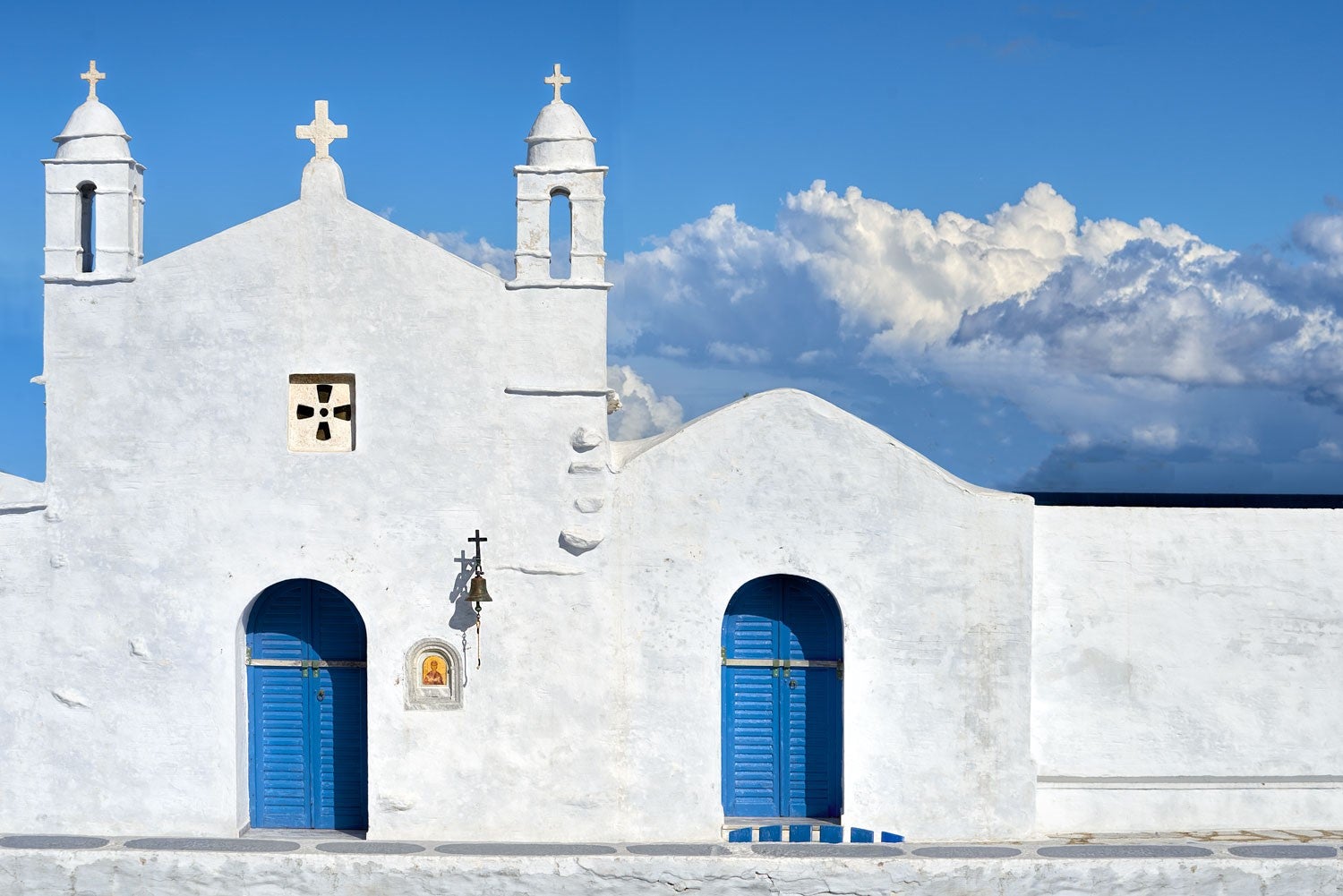
Your support helps us to tell the story
From reproductive rights to climate change to Big Tech, The Independent is on the ground when the story is developing. Whether it's investigating the financials of Elon Musk's pro-Trump PAC or producing our latest documentary, 'The A Word', which shines a light on the American women fighting for reproductive rights, we know how important it is to parse out the facts from the messaging.
At such a critical moment in US history, we need reporters on the ground. Your donation allows us to keep sending journalists to speak to both sides of the story.
The Independent is trusted by Americans across the entire political spectrum. And unlike many other quality news outlets, we choose not to lock Americans out of our reporting and analysis with paywalls. We believe quality journalism should be available to everyone, paid for by those who can afford it.
Your support makes all the difference.I seem to have bypassed the “Greek island” phase of my life. Most people I know went after finishing their A-levels to go and get absolutely bent on Kos or Crete. (Me and four friends were the only students to go to Sousse, Tunisia, for our post-school holiday.) At the age of 32, the nearest I’d got to Greece was Albania in the east and Bulgaria in the west.
Turns out, Tinos is a good island to visit as a thirty-something first-timer: mercifully, the adjectives most often attached to it are "laidback", "foodie" and "arty". And after a couple of days bouncing around zippy capital Athens, eating crispy souvlaki and downing freddo cappuccinos in party district Monasteraki before half-heartedly clambering up to the Acropolis in the still-hot September sun, an island on rewind was the pace I needed.
Plus, even The Independent’s excessively well-travelled Simon Calder hadn’t heard of it, so I figured it must be suitably under the radar.
Tinos, in Greece’s Cyclades archipelago, is easily accessible by ferry from both Athens and nearby Mykonos (indeed, it’s close enough to Mykonos to visit a bouncy beach club night and come back first thing in the morning).
It’s low-key (notably, there are no chains anywhere and the island is expanding its tourism offering at typically glacial pace) – which means it’s quiet, bucolic, rural. Just a handful of roads spin off from Tinos Town, leading to time-warped villages buried amid its rugged interior.
And it’s so safe, says one born-and-bred resident, Jenny, that people leave the keys in their scooters while they do their shopping and their back doors unlocked at night.
This blue-and-white island is also increasingly marking itself out as a haven for art and design. Not in that naff, tourist board-sponsored way, but in the slow creep of the local designers and artists who have realised that yes, this is a rather lovely island to live and work on. After all, artists take inspiration from their surroundings… and, well, there are few places better than this little corner of the world.
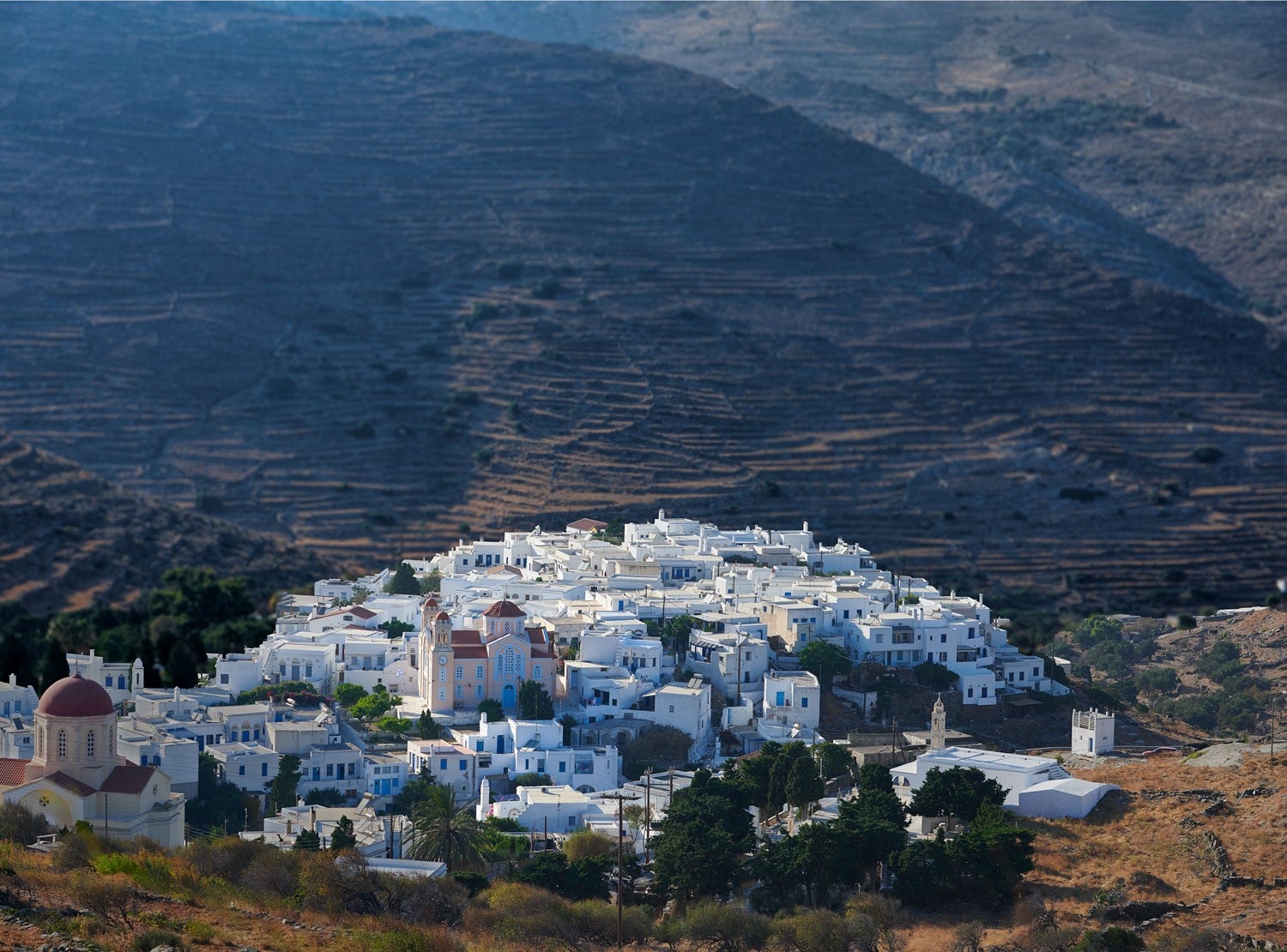
It wasn’t always this way. Tinos has traditionally been an island of pilgrimage, thanks to its majestic Panagia Evangelistria church in the centre of the main town, with its icon of the Virgin Mary. Each year on 15 August, thousands of pilgrims from all around Greece descend upon Tinos to make their way up the hill on their hands and knees to this very church. And until recently, that was all anybody came to Tinos for.
Over the past few years, the focus has slowly pivoted to Tinos’ art scene, although you couldn’t say it was new – rather newly appreciated. This place’s DNA has always been shot with art and design, proven so by the thousand or so dovecotes, bleached white squares with decorative triangle-shaped holes, studded along every road in Tinos. There has been a marble carving tradition in the north west of the island, near a pretty town called Pyrgos, since the 19th century; and several of Greece’s most loved sculptors, including modern artist Yannoulis Chalepas, have emerged from Tinos. It helps that it’s just a couple of hours’ fast ferry from Athens, where there’s already a zippy international art scene.
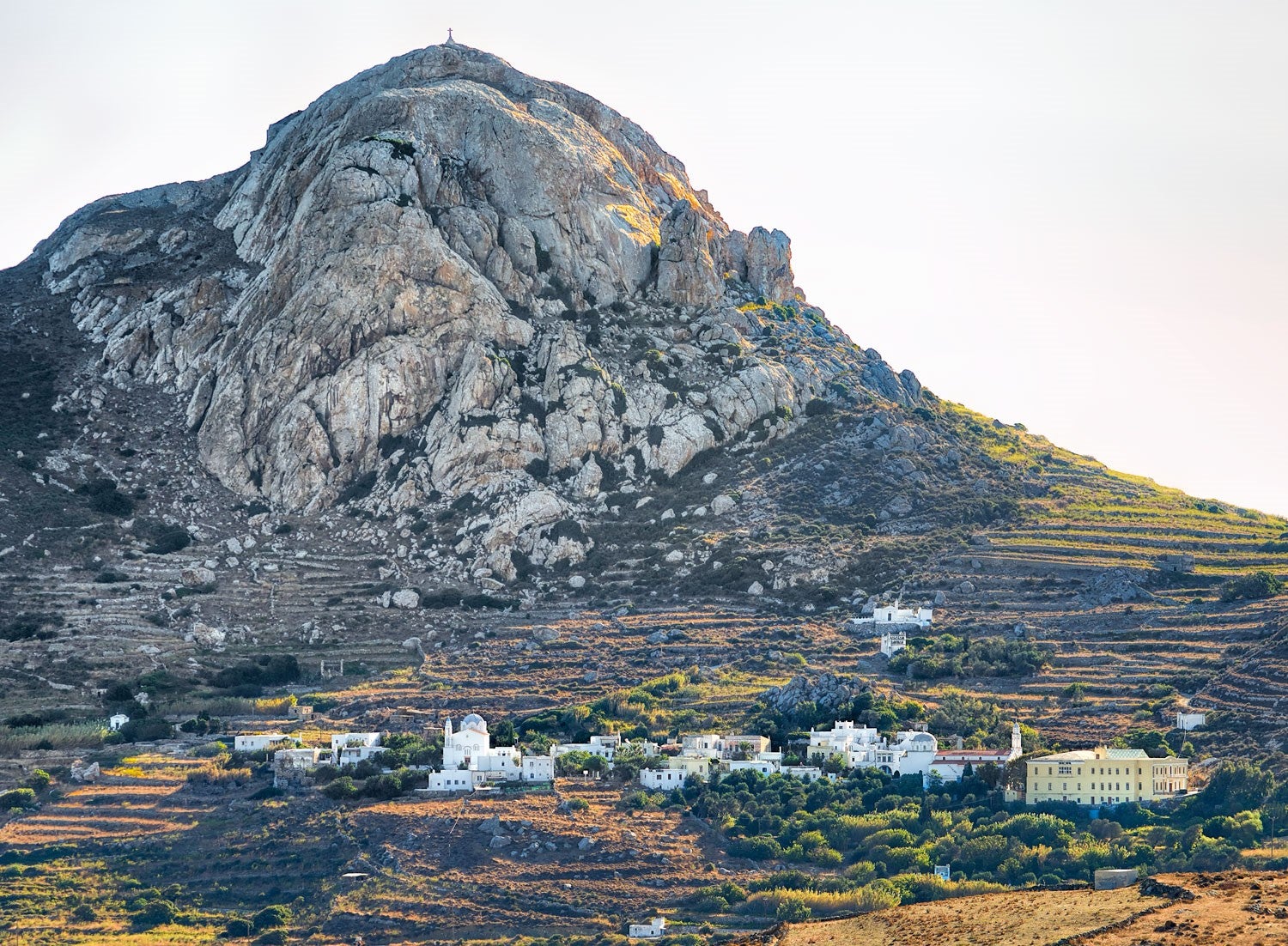
In summer 2019, at the same time that British sculptor Antony Gormley unveiled “Sight”, an installation of iron figures thrown out to sea on the nearby island of Delos, the artisans of Tinos and movers and shakers from Athens got a new place to stay: Xinara House, in the postcard-perfect village of the same name, beneath the Exombourgo mountain.
An unloved pair of bishops’ houses was redeveloped by Peter and Susan Marston, a husband-and-wife design team from London. They took this warren-like property on the village’s main (translate: only) street and turned it into a creative super-villa in the style of Cambridge’s Kettles Yard: and anyone from a couple to a big group can rent it out and stay.
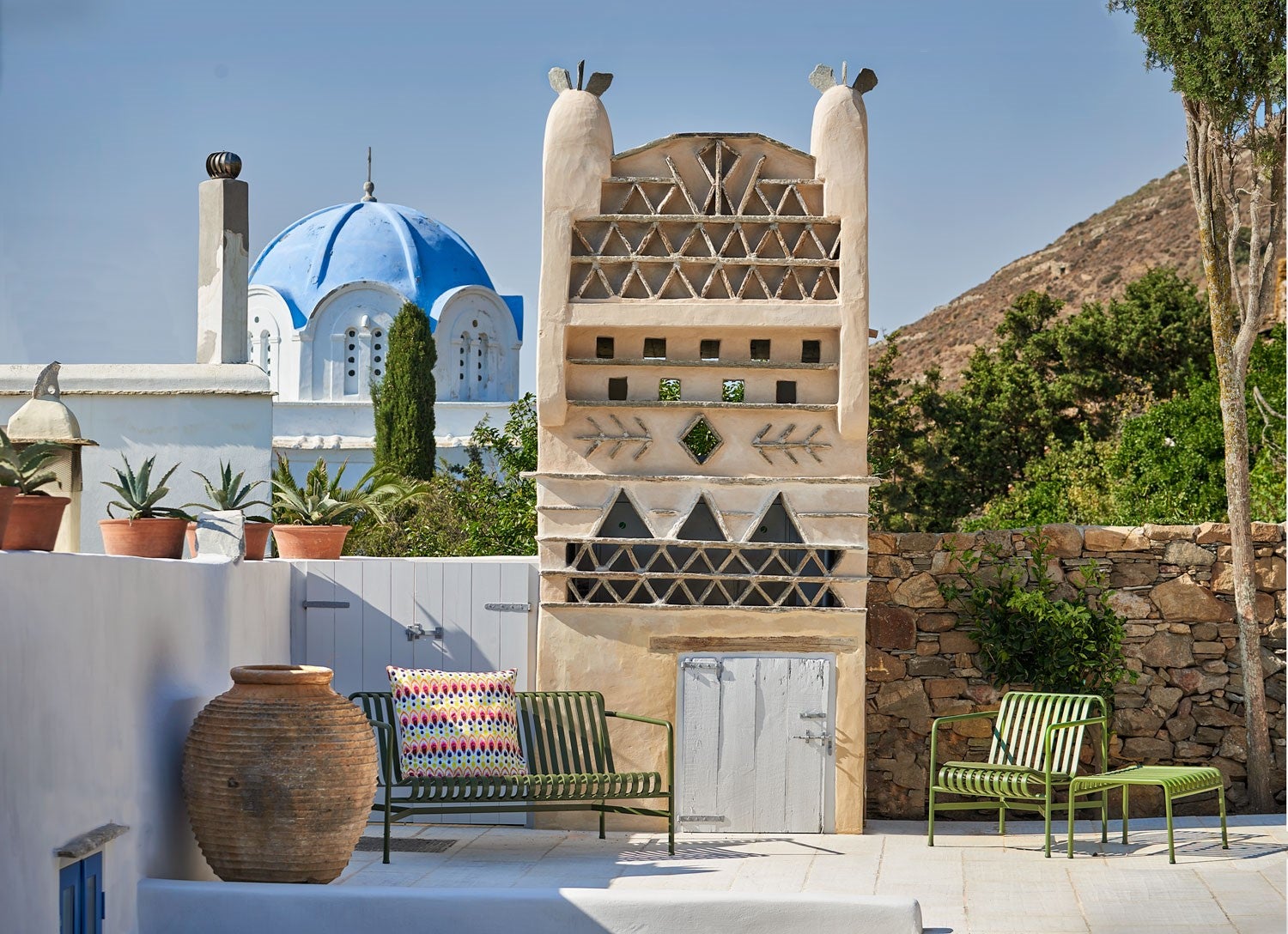
In the living room there’s a navy blue blancmange-style daybed by artist Rachel Whiteread, hanging above the kitchen door are a collection of mismatched Wedgewood plates, while above the uneven white steps down to the basement bedrooms are punky Gilbert & George prints. Books and DVDs are stuffed in corners around the fireplace, woollen throws in funky prints cover most surfaces. Blousy white and blue linens dress the four poster bedrooms, which heave with local Greek ornaments and handicrafts. Then there’s the terrace, which cascades from a landscaped garden down to a sundeck, complete with a dovecote. It’s at once deeply fashionable and extremely homely.
Peter, who conceived Xinara House as “a showcase for our work, and collection of art, crafts and objects”, tells me: “When we arrived three years ago we met many artists who’d settled from around Europe in the island’s 50 plus villages where they bought old houses with space to work.
“At the same time, fashion people who own villas or have stayed on Tinos include Vivienne Westwood and Roberto Cavelli.”
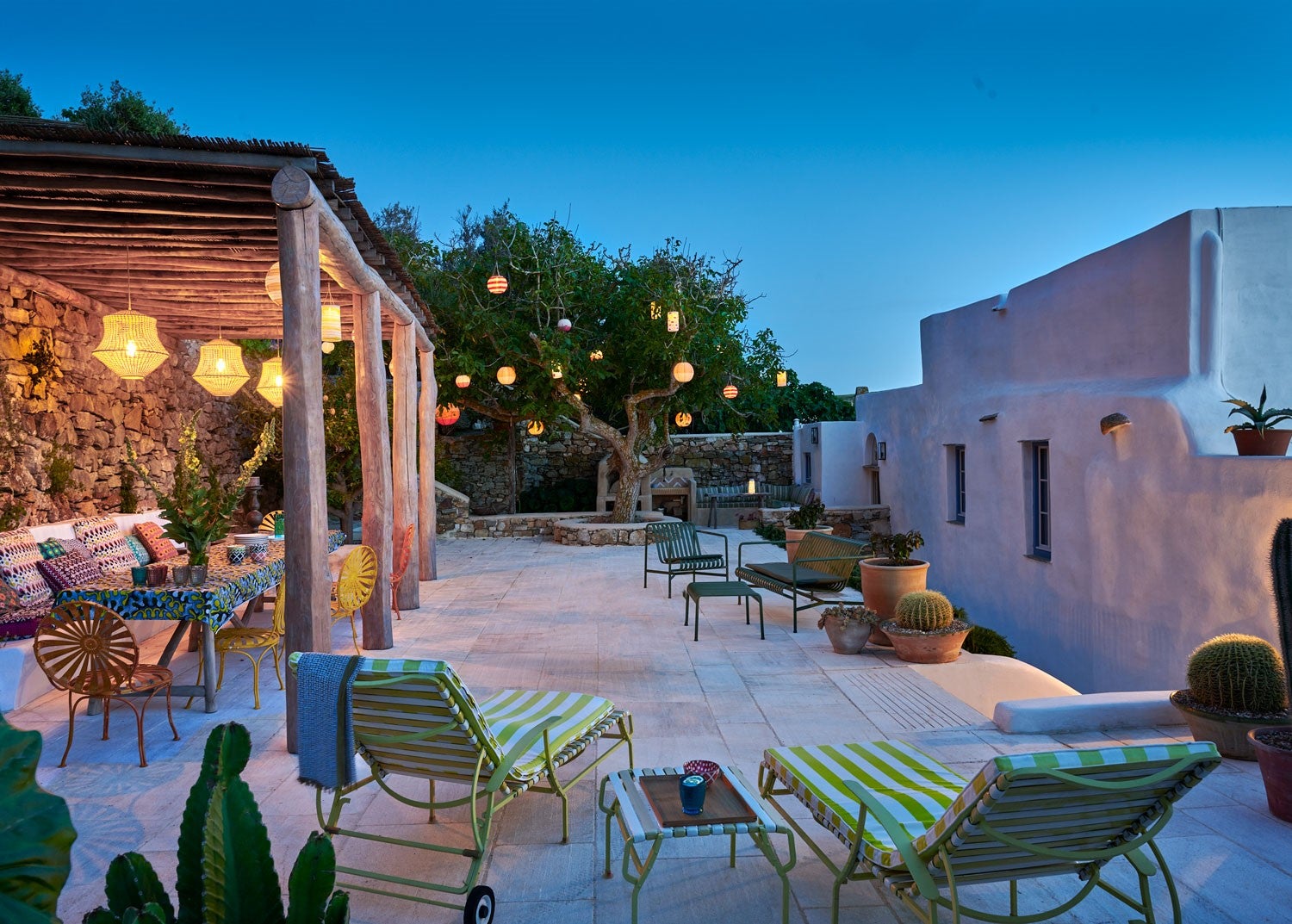
Safe to say I’m not in those leagues at all. My own Greek island requirements are far more fuss-free, when days are spent driving out to petite villages such as gorgeous Pyrgos, which fans out from a higgledy-piggledy courtyard fringed by coffee shops and boutiques selling floaty dresses and local honey. This town is home to the chunky Museum of Marble Crafts and the Marble School (there are marble quarries nearby).
Other days are spent blissing out on beaches and wandering rocky coves of the northern coast, like the town of Panormas or the empty charms of Kolimbithra, perhaps stopping for homespun plates of fresh feta and dolmades at tiny tavernas.
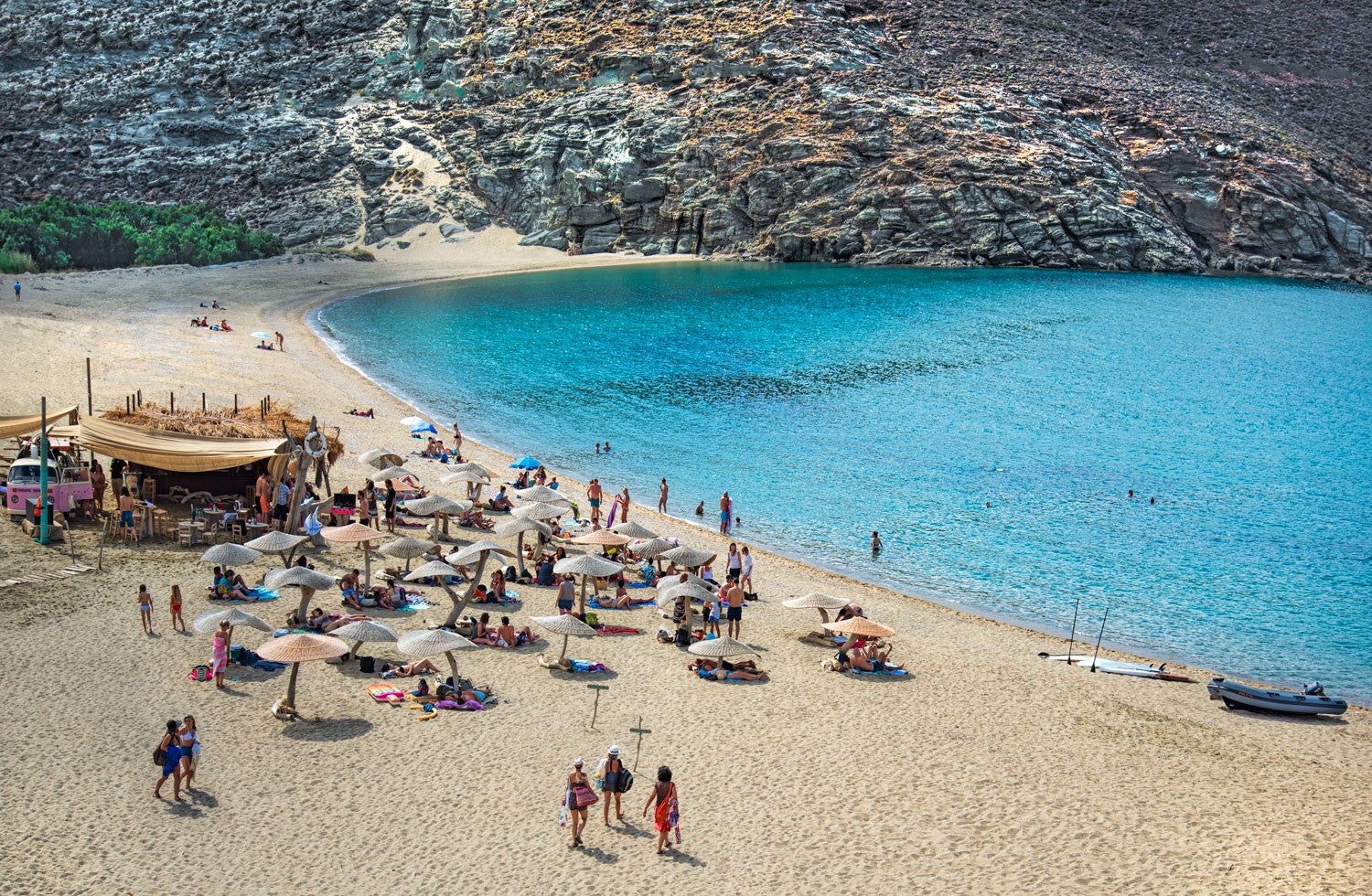
Nights are spent mainly in Tinos Town – we come before sunset one night to wander the Cultural Centre and Museum on the port – before chasing down some fresh seafood linguine at one of the shacks near the water.
Handpicked recommendations from Xinara House tells visitors to try organic Nissos Beer from a local brewery and the raki from the village of Falatados, although we are too blissed out to do either.
We wandered through the soft light of Xinara on our last morning, in the shadow of the village’s blue-and-white church and mount Exombourgo. The sky was lightening, the far away Aegean Sea was brightening. For once, I was glad I’d waited 32 years to visit a Greek island.
Travel essentials
Wizz Air, easyJet, Ryanair, British Airways and Aegean Airlines fly to Athens from around £45 ($60) return. Tinos is a two-hour fast ferry from Rafina port to the east of Athens, or a slower ferry from Piraeus port. For schedules and prices, visit openseas.gr.
You’ll want to hire a car to get around Tinos. There are a number of car hire firms in Tinos Town, which are a short walk from the ferry.
Rates at Xinara House start from €100 (£84, $110) a night in the Blacksmiths’ Cottage, which sleeps three.
Join our commenting forum
Join thought-provoking conversations, follow other Independent readers and see their replies
Comments